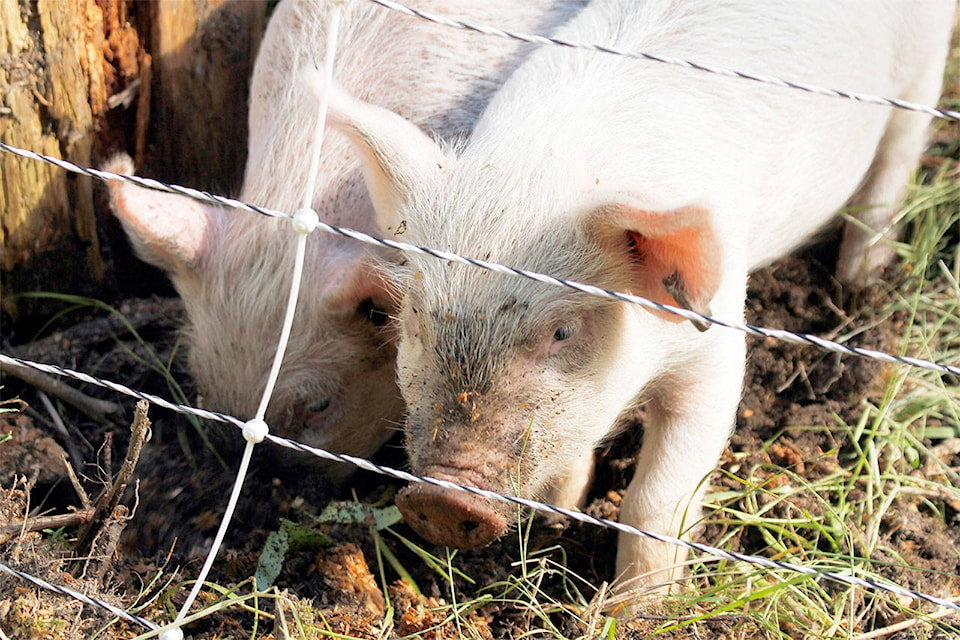Why would a cattle rancher muse about pigs in the middle of the only real haying weather we have had so far this year?
Simple, it rained last evening enough so will have to let the hay dry (again).
Over the years, many ranchers and small lot farmers have produced pork for themselves and the local market. Several have tried commercial industrial scale pig farming, however there is quite a dramatic “boom and bust” phenomenon in the pork market.
Like local beef purchased from trustworthy sources, the same can be said about sourcing pork.
In our early days of ranching, we would raise two pigs one for us and one for sale to pay most of the input (cash) costs.
In other words, one pig free except for the labour, for those of us who could add feeding pigs to the chore load. In terms of market value inexpensive labour derives value from backyard food production.
Compared to supermarket pricing, often the local product is more expensive. Like other local food — such as veggies and beef, to name a few products, you may have to pay more. But consider the value: supporting local producers and paying a decent price so they can stay in business and be there when there are major glitches in the larger market place.
Read more: Feds to buy up surplus from Canadian agrifood producers as part of $252M investment
In case you don’t want to read further about non-cash values in producing pork, but know someone or yourself who wants to raise some pigs, then I will post this reference(www.bcpork.ca).
At this source you can find a 250-page reference manual for small lot pork farming, authored by a team under the guidance of BC Pork Producers and the BC Ministry of Agriculture.
In order to keep the material current, updates occur periodically on line. Go there for the latest in formation.
There are some templates there for figuring out the costs of production, but, sadly, we are failed by the lack of benchmarking data on costs so we can see where we stand in relation to others in the business.
I have mentioned the pricing issue. Recent news suggests that in Canada pork prices are determined by referring to U.S. prices. The U.S. doesn’t have slaughter capacity due to COVID issues in meat plants reducing demand by packers, therefore prices are low.
In Canada, there is slaughter capacity, but our pricing system keeps the price low.
I could go on, but suffice it to say we need to build more resilience in to the pork system.
Even many of the Hutterite colonies that have a mainstay of pork production are exiting.
In the July 13, 2020 Western Producer, a July 17th report from the western pork boards’ pricing committee stated:
“Finding a reasonably equitable method of sharing the value of the pig is fundamental to the long-term sustainability of the industry for both producers and packers.”
Ranchers doing direct marketing of beef have similar although not so drastic challenges.
We do hear of beef producers and vegetable producers saying local production has been ramped up so much that they can’t sell their product.
news@wltribune.com
Like us on Facebook and follow us on Twitter
David Zirnhelt is a rancher and member of the Cariboo Cattlemen’s Association. He is also chair of the Advisory Committee for the Applied Sustainable Ranching Program at TRU.
